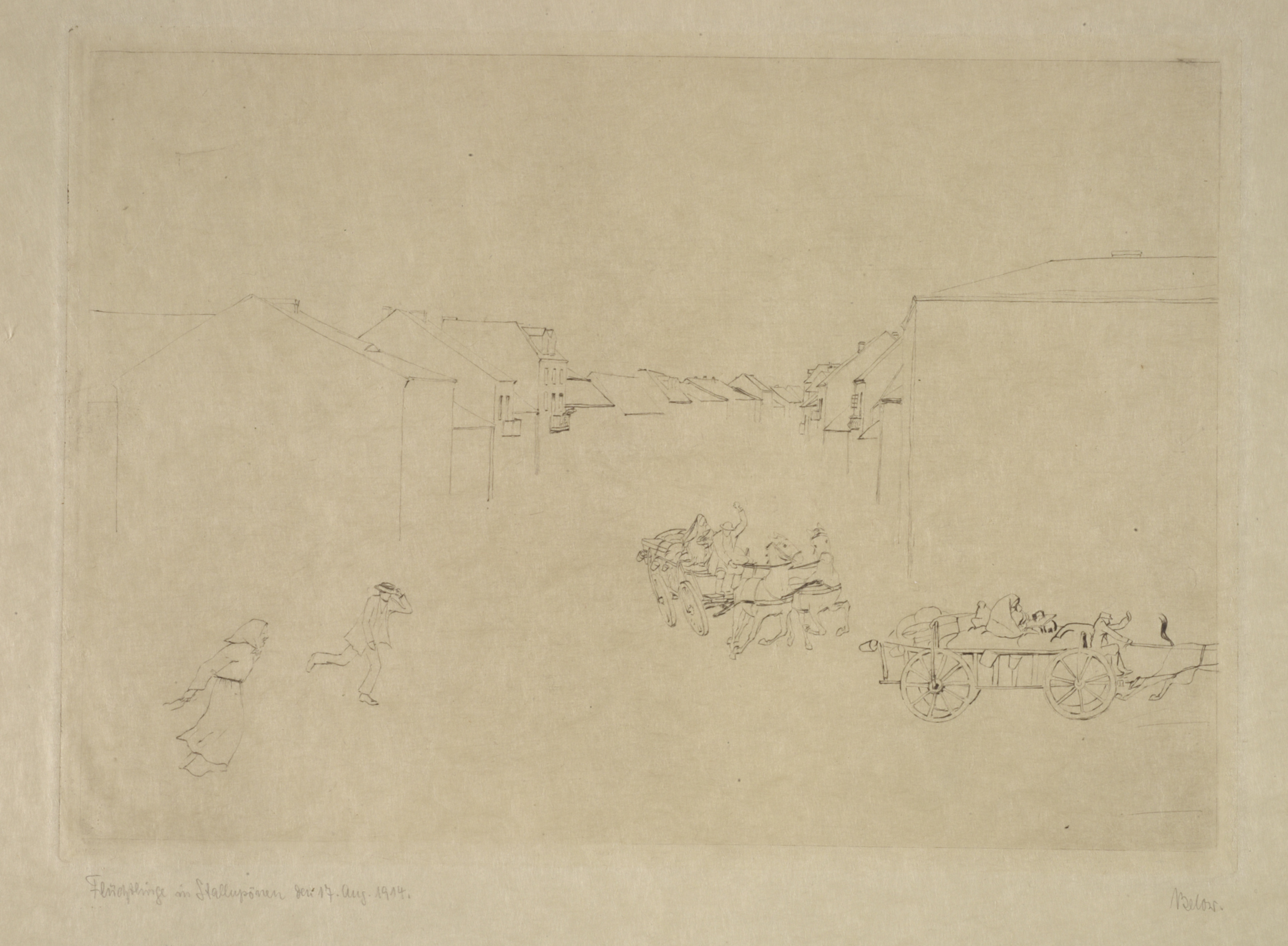Flüchtlinge aus Stallupönen (Refugees from Stallupönen), Richard von Below
Artwork Overview
Richard von Below, artist
1879–1925
Flüchtlinge aus Stallupönen (Refugees from Stallupönen),
1914
Where object was made: Stallupönen, German Empire (present-day Nesterov, Russia)
Material/technique: etching
Dimensions:
Image Dimensions Height/Width (Height x Width): 199 x 279 mm
Sheet/Paper Dimensions (Height x Width): 266 x 394 mm
Mat Dimensions (Height x Width): 14 x 19 in
Image Dimensions Height/Width (Height x Width): 7 13/16 x 11 in
Sheet/Paper Dimensions (Height x Width): 10 1/2 x 15 1/2 in
Mat Dimensions (Height x Width): 14 x 19 in
Image Dimensions Height/Width (Height x Width): 199 x 279 mm
Sheet/Paper Dimensions (Height x Width): 266 x 394 mm
Mat Dimensions (Height x Width): 14 x 19 in
Image Dimensions Height/Width (Height x Width): 7 13/16 x 11 in
Sheet/Paper Dimensions (Height x Width): 10 1/2 x 15 1/2 in
Mat Dimensions (Height x Width): 14 x 19 in
Credit line: Gift of Lutz Riester
Accession number: 2005.0202
Not on display
If you wish to reproduce this image, please submit an image request



